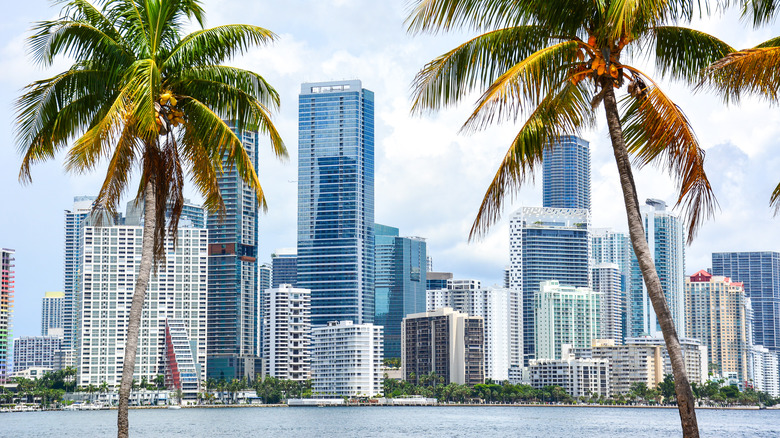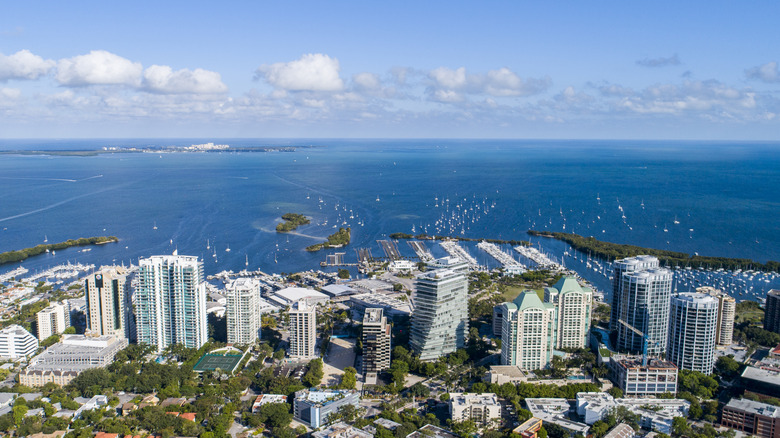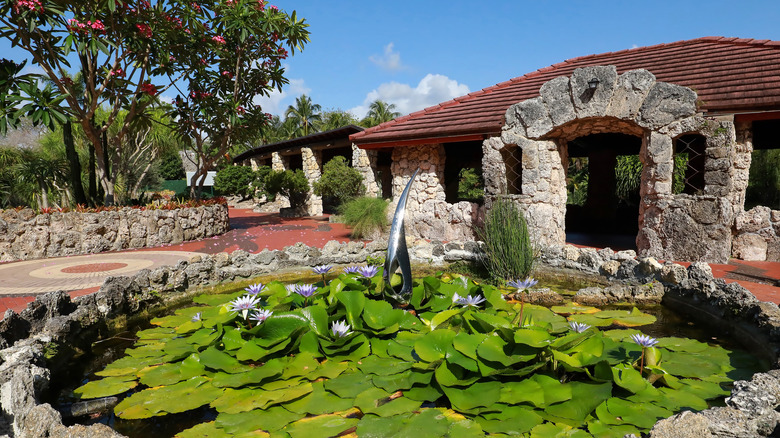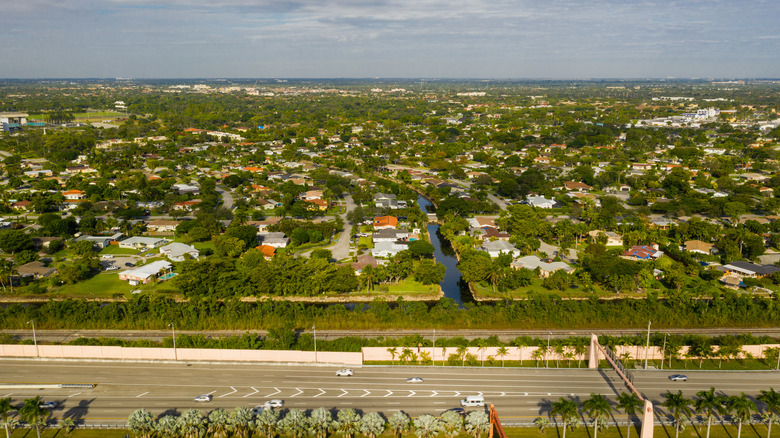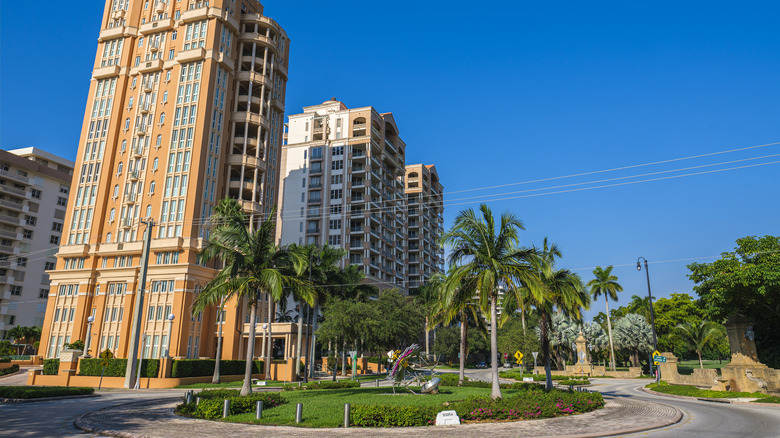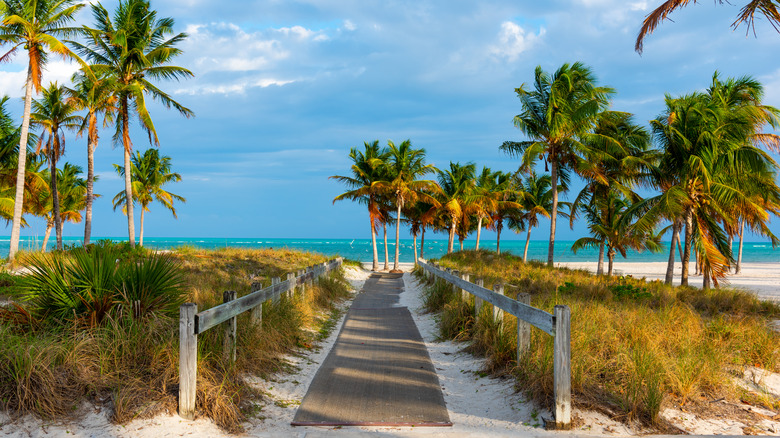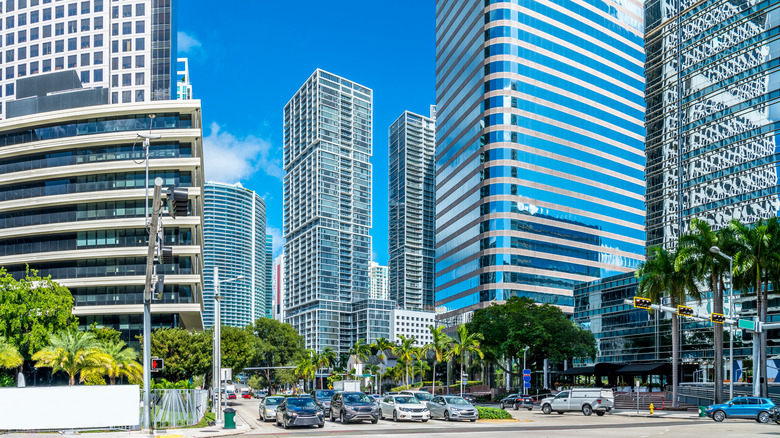The 6 Best Family-Friendly Neighborhoods In Miami, Florida
With pleasant weather and plenty of attractions to experience, beachfront cities may seem like the perfect locations to raise a family. However, the prevalence of crime in highly-populated metropolitan areas can make cities like Miami dangerous for children, raising several concerns for parents wanting or needing to move. According to statistics from the Miami-Dade Police Department, violent criminal activity has increased by approximately 30% from 2021 to 2022, and nonviolent crime increased by approximately 16% over the same period.
However, don't let these crime rates distract you from all the positive qualities a city like Miami can offer. While no neighborhoods are entirely void of crime, some are arguably safer than others. If you're searching for a safe community that your kids will love to live, learn, and play in, here are six family-friendly neighborhoods to check out before planning a move to one of the Sunshine State's most iconic cities.
Coconut Grove
Nestled in between Biscayne Bay and downtown Miami, Coconut Grove is Miami's oldest continuously-inhabited neighborhood, according to Josh Stein Realtor. Once an independent city, the district was annexed to become a part of Miami in 1925, per Miami Luxury Homes. The area is known for its historic charm, rich greenery, and bohemian feel. The community provides the benefits of suburban life without the onslaught of disadvantages. Coconut Grove's crime rates are much lower than the city's average, and the schools in Coconut Grove are some of the highest-ranked in Miami, says Josh Stein Realtor. The area is also walkable and bike-friendly, making it easy to navigate the neighborhood's array of coffee shops, boutiques, and other touristy attractions.
Coconut Grove is rich in diversity, as well. The neighborhood shares a unique history with Miami's Black population, as migrants from the Bahamas settled into the area around the late 19th century. According to the Greater Miami Convention and Visitors Bureau, the Bahamians established a community that continues to influence Coconut Grove's culture to this day. However, these amenities do not come cheap, as the average listed home price in the neighborhood reached $1.8 million last month, per Realtor. The critically-acclaimed private schools in the area are also pricey, with Coconut Grove's ultra-selective college preparatory school Ransom Everglades charging yearly tuition upwards of $45,000.
Pinecrest
Pinecrest is a village in southeastern Miami-Dade County situated south of Coconut Grove and Coral Gables. Considered one of Miami's most expensive villages, per Josh Stein Realtor, approximately 20,000 people call this upper-class community home. According to Compass Real Estate, the neighborhood was first discovered when contractors began constructing the Overseas Highway in the early 20th century, the major infrastructure project connecting the Florida Keys to the mainland. Wealthy Miamians began flocking to Pinecrest in the 1960s, helping develop the area into the peaceful oasis it's recognized today.
Compass Real Estate describes Pinecrest as the most desirable of all of Miami's suburbs due to its cushy, laid-back atmosphere and incomparable landscaping and architecture. Don't expect much noise or partying around here since most residents move to Pinecrest to escape Miami's hyperactive nightlife. Instead, residents partake in quieter activities like cycling, wine tasting, and tennis. According to Compass Real Estate, some of Miami's most expensive mansions are found in Pinecrest. Redfin states that the median price for a home reached $1.8 million this past October. Like Coconut Grove, Pinecrest has excellent schools for the area's youth, with private schools charging anywhere from $20,000 to $45,000, depending on the level of education. The site is also lauded for its beautiful parks and gardens. Despite Pinecrest's secluded nature, the community's residents enjoy easy access to the city by car, with downtown Miami located about 35 minutes north of the neighborhood.
Kendall
Kendall sits directly west of Pinecrest, further inland compared to other neighborhoods. Offering a mix of amenities that attract residents of all ages, the district provides a diverse atmosphere perfect for young professionals and families alike. Featuring a plethora of captivating attractions, Kendall is loaded with fun activities for families to experience together. On average, residents of Kendall enjoy a cheaper cost of living compared to their counterparts in suburbs like Coconut Grove and Pinecrest. According to Pro Movers Miami, potential buyers can find homes on the market priced in the $300,000 range. Also, almost 70% of Kendall's residents opted to purchase their homes.
Renting is still a feasible option in the area, however. Those looking to rent in Kendall can expect prices circulating $1,550 a month, says Niche. Pro Movers Miami also stated that the average cost of living in Kendall equates to about $35,000 yearly, considering food, bills, insurance, housing costs, and other necessities. As for things to do around Kendall, the neighborhood is home to one of the most popular shopping malls in the entire state, Dadeland Mall, which features over a million square feet of retail space comprising more than 150 stores. Kendall is also home to the city's zoo, Zoo Miami, an attraction perfect for families with younger children. The area also has excellent schools, says Niche, and includes a popular restaurant scene.
Coral Gables
Perhaps best known for housing the University of Miami, Coral Gables is another alternative for Miamians looking to distance themselves from the city. Incorporated into its own independent city in 1925, Coral Gables holds the distinction of being one of Florida's first planned cities, according to The New Tropic. Located about 7 miles southwest of downtown Miami, Coral Gables incorporates the lively nature of a college town with the charm of a historic district, making it a great place to raise a family.
Coral Gables is home to the Biltmore hotel and the Venetian Pool, two iconic landmarks that capture the suburb's historic feel. Visit Florida states that the city is known for its opulent mansions and lush greenery, earning the nickname "The City Beautiful" due to its aesthetic appeal. This appeal comes at a high cost, with the median price for a home in the area reaching $1.5 million in October, per Realtor. However, despite the high cost of living, residents of Coral Gables hardly run out of things to do. The city's shopping and dining district, the Miracle Mile, is a popular attraction for visitors and residents, says Visit Florida. Visitors can find the Fairchild Tropical Botanic Garden and other activities to experience. Those looking for more relaxed fun can check out Coral Gables' small collection of museums available to the public, including the Lowe Art Museum, Canale Diaz Art Center, or the Coral Gables Museum.
Key Biscayne
For Miami residents craving a more beachy and secluded atmosphere to call home, it's difficult to find better seclusion than that in Key Biscayne. Situated between two parks off Florida's east coast, the town is only accessible via State Road 913, which connects the island to the rest of Miami. Despite what the name might suggest, Key Biscayne is not part of the state's infamous Keys. According to Sea-Seek, the island of Key Biscayne is situated north of the iconic archipelago. It is composed of eroded sand washed down from the Appalachian Mountains rather than densely-packed deposits of coral and limestone. While not nearly as densely populated as neighborhoods on the mainland, the Village of Key Biscayne still offers its fair share of attractions that appeal to guests of all ages.
Residents can explore the two parks neighboring the village to the north and south: Crandon Park and Bill Baggs Cape Florida State Park, respectively. Visit Florida recommends that Crandon Park visitors access the park's 18-hole golf course for a match with friends or family or to take private lessons with an instructor. With Key Biscayne surrounded by water, the village offers many water-based activities for guests, including catamaran rides, kayaking, and snorkeling. There are also opportunities to cycle around the island. Resources like schools and grocery stores are minimal for long-term residents but are still available, so those in the village can avoid driving to the mainland for basic needs and services.
Brickell
Miami's Brickell neighborhood is also a safer option for families, but not for reasons you'd expect. Brickell houses Miami's financial district and is a rapidly-growing part of the city. The neighborhood sits directly below downtown, says Miami Condo Investments, just north of the Rickenbacker Causeway, the toll causeway leading to Virginia Key and Key Biscayne. The area presents a far more urban vibe than previously mentioned neighborhoods, which embody more of a suburban energy that appeals more to families and retirees. Offering proximity to the offices of many international banks, Miami Condo Investments also states that Brickell is a popular neighborhood of choice for young professionals wanting to live within walking distance of their jobs.
Plenty of places to shop and dine in Brickell cater to the area's age demographics. According to Miami Condo Investments, the $1 billion mixed-use development Brickell City Centre is a popular shopping destination in the neighborhood, providing 500,000 square feet of retail space for visitors and residents to utilize. Another development, Mary Brickell Village, also offers shopping and dining opportunities in the neighborhood, although on a smaller scale, measuring approximately 200,000 square feet. Brickell also features luxury accommodations, from five-star hotels to grandiose apartment complexes. The prominence of luxury amenities in the area and the influx of young, business-oriented singles make the neighborhood one of the safest in the city.
